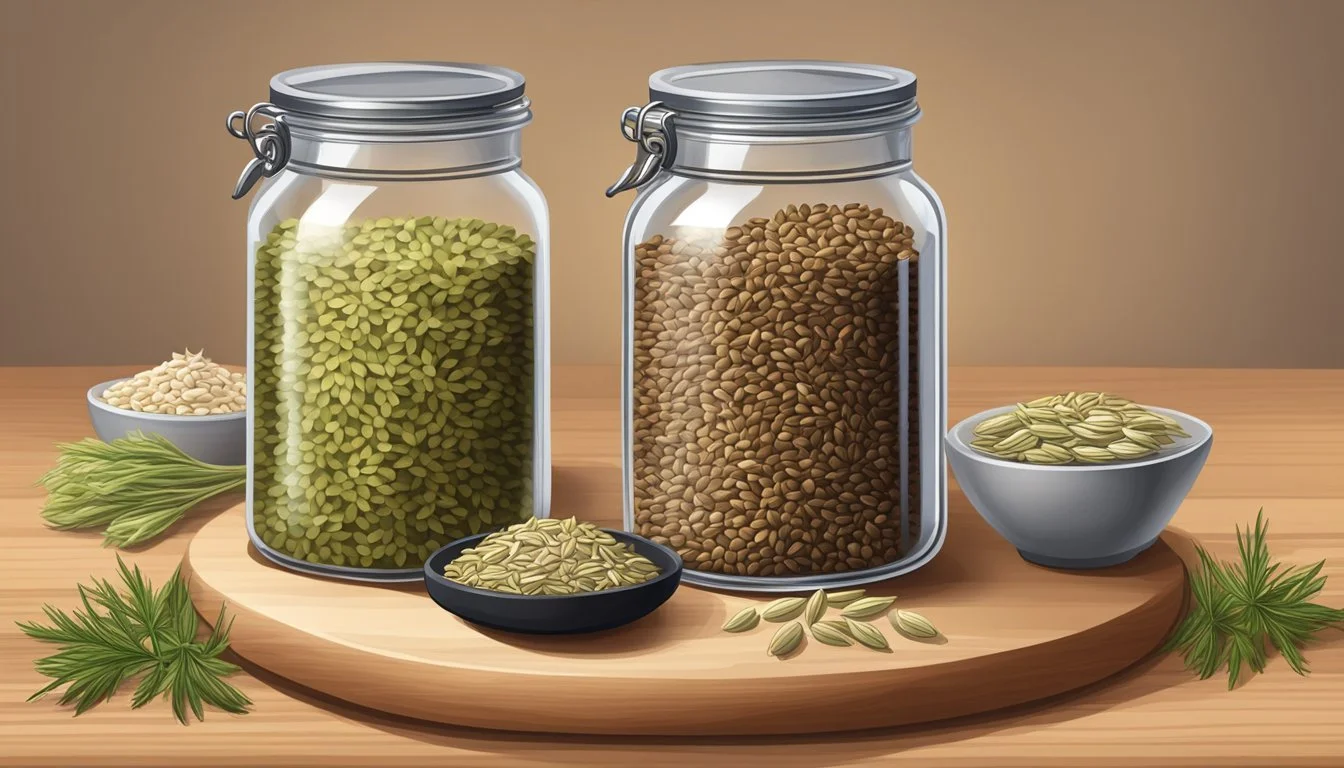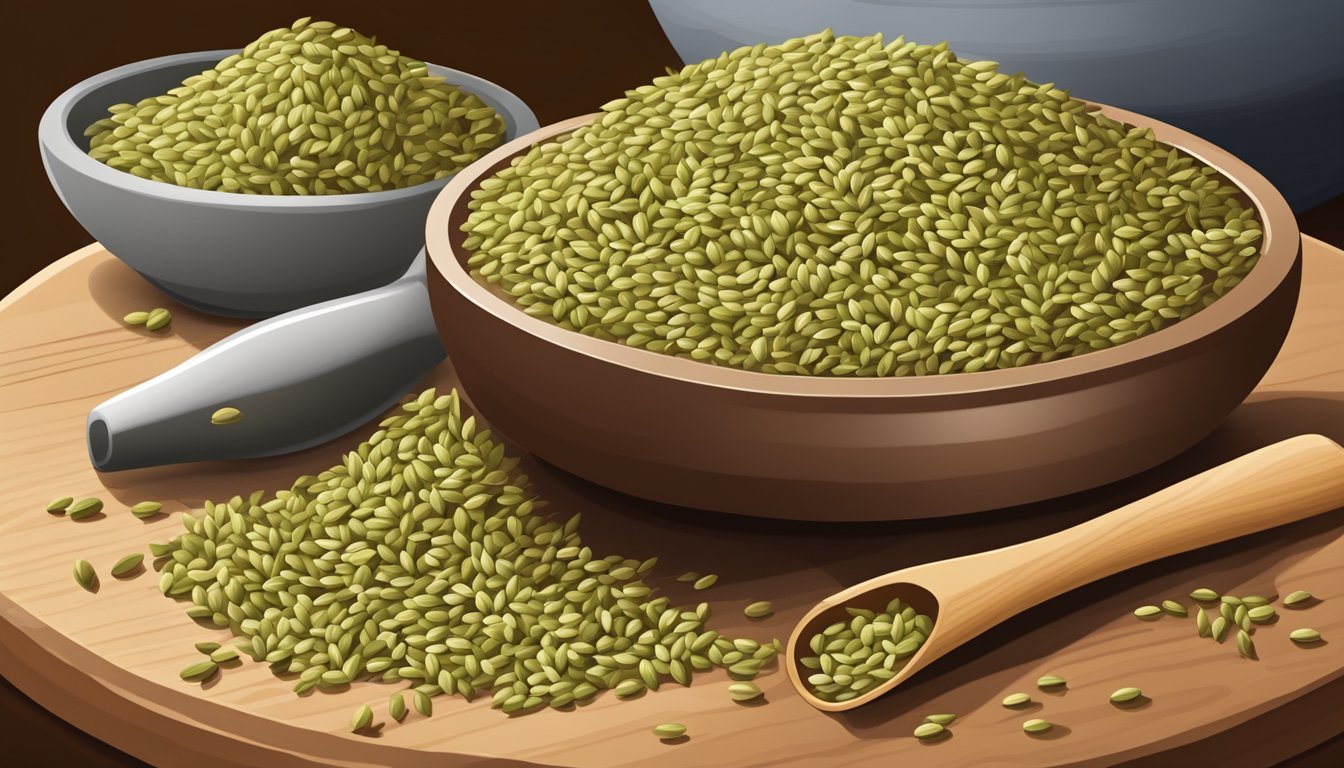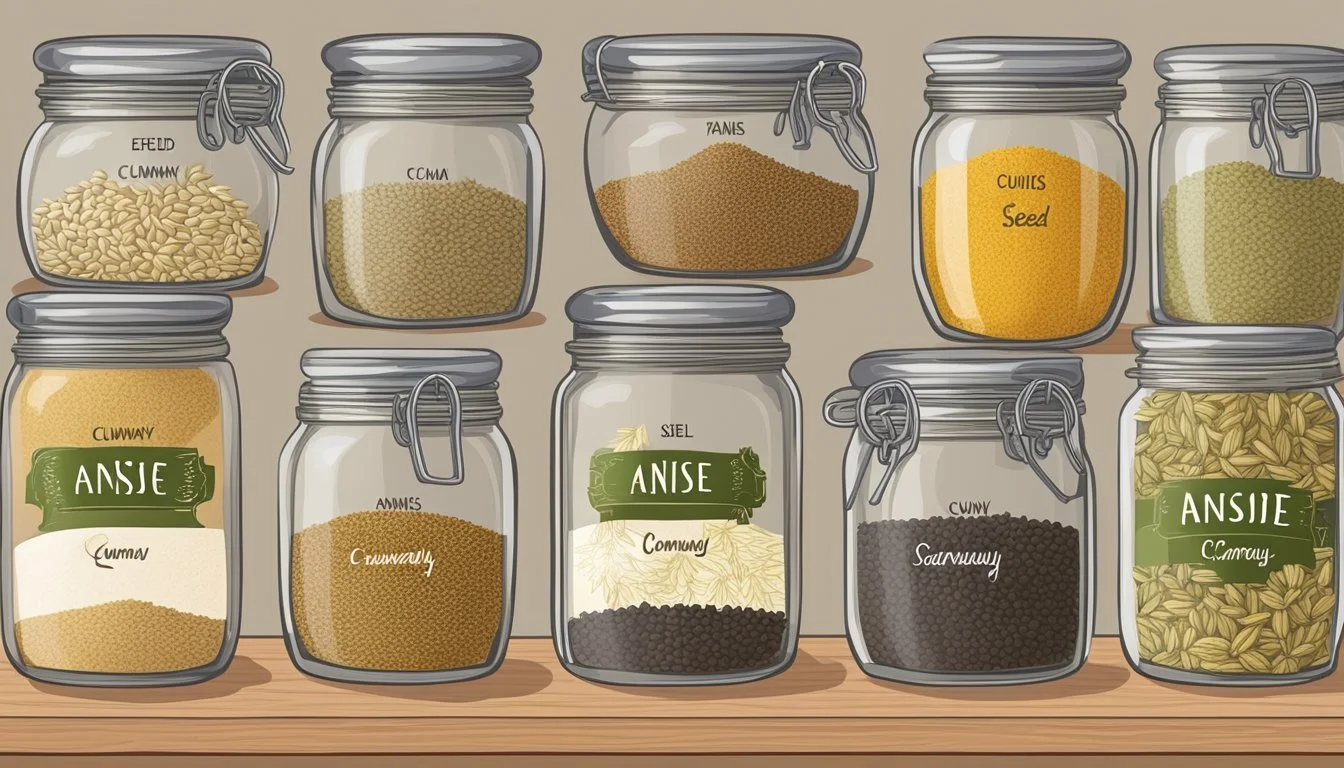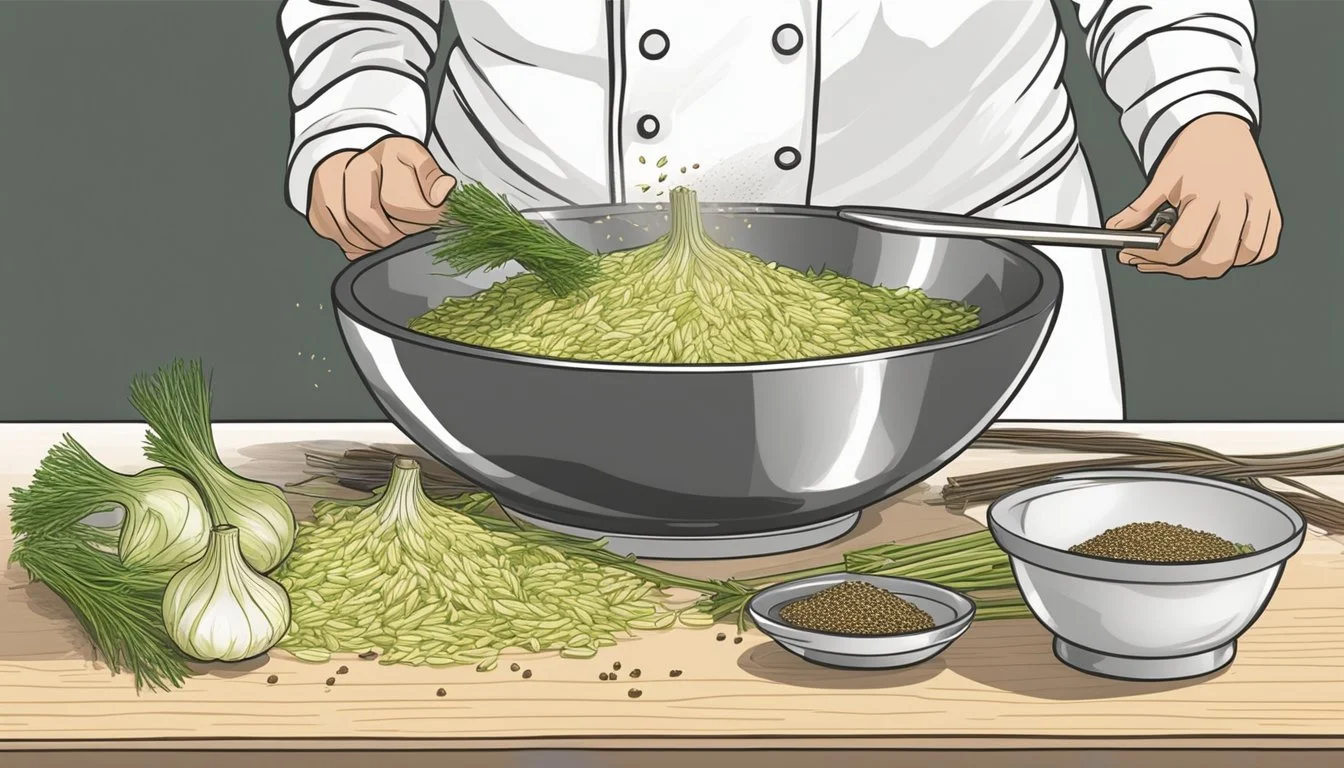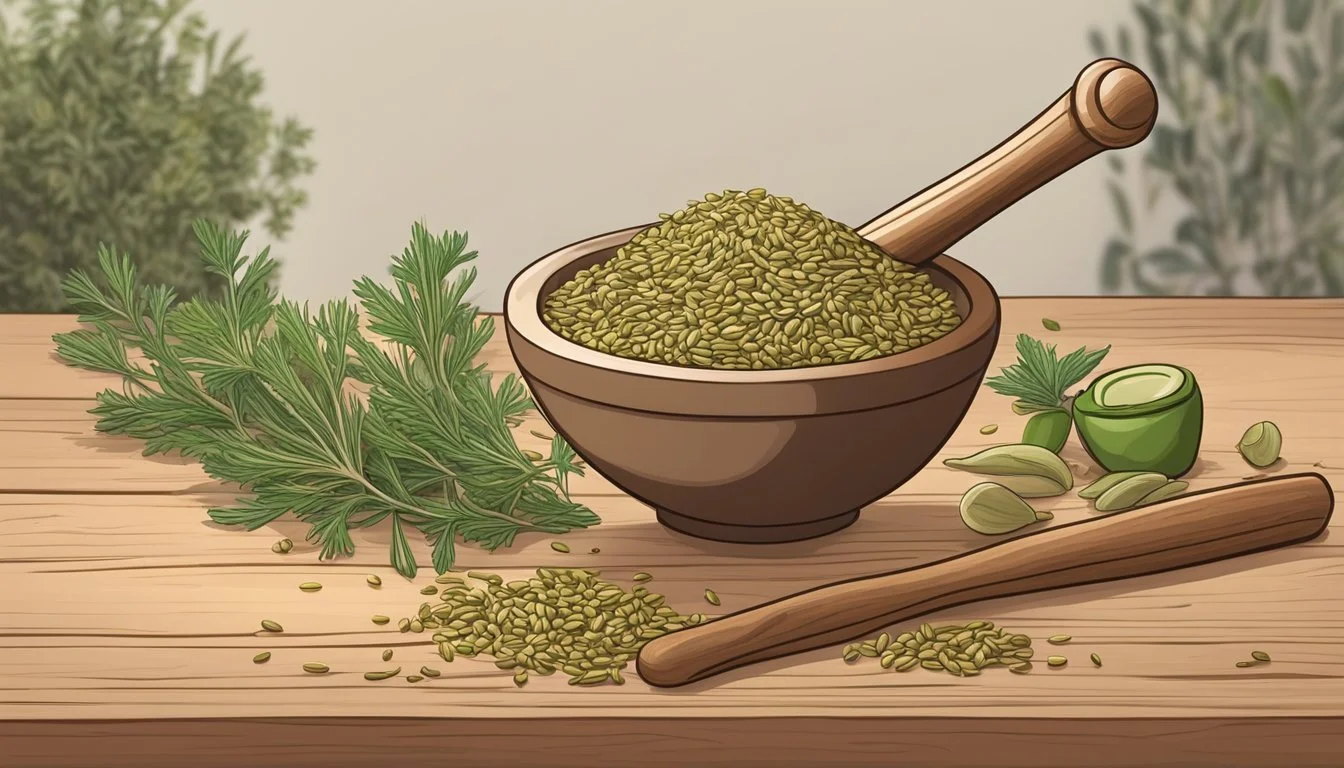Fennel Seeds Substitutes
Top Alternatives for Anise Flavoring
Fennel seeds are a popular culinary spice with a distinctive anise-like flavor, commonly used in a variety of dishes ranging from Italian sausages to Indian curries. They are prized for their ability to impart a sweet, herbaceous note to recipes. However, not everyone has fennel seeds on hand, and some may be looking for alternatives due to dietary restrictions or personal taste preferences.
Fortunately, there are several fennel seed substitutes that can closely mimic or complement their flavor in a dish. Anise seeds, with their similar licorice taste, make an excellent direct replacement. Caraway and dill seeds can also serve as effective substitutes, offering a somewhat different but equally appealing flavor profile. For those seeking to recreate the texture of fennel seeds without the anise taste, cumin seeds or chopped parsley may provide a solution. These substitutes ensure that the absence of fennel seeds does not compromise the taste of the culinary creation.
Understanding Fennel Seeds
Fennel seeds are a widely used spice with distinct characteristics and historical significance. This section serves as a guide to their culinary applications, nutritional benefits, and origins.
Culinary Uses of Fennel Seeds
Fennel seeds have a reputation for imparting a licorice-like flavor that is subtly sweet and somewhat earthy. They are a versatile ingredient in the kitchen, often incorporated into various dishes for an added depth of flavor. Chefs commonly use fennel seeds in soups, curries, and vegetable-based recipes. The seeds also contribute a pleasing texture, further enhancing the dish's sensory appeal.
Nutritional Profile of Fennel Seeds
Nutritionally, fennel seeds are notable for their fiber content and wealth of minerals and vitamins. They provide antioxidants and have been associated with several health benefits.
Fiber: Aids in digestion
Minerals: Including calcium, iron, and magnesium
Vitamins: Such as Vitamin C
The seeds offer a blend of these nutrients, contributing to a balanced diet when used as a part of a variety of meals and cuisines.
Historical Context and Origin
Fennel seeds are deeply rooted in history. Their usage dates back to the Middle Ages and they are perceived as a symbol of longevity. Fennel belongs to the carrot family and is indigenous to the Mediterranean, but has since spread across various cultures due to its versatility in cooking and therapeutic properties. Over time, fennel seeds have become integral to the culinary traditions of many regions.
Fennel Seed Substitutes
When cooking, finding a substitute for fennel seeds is essential if they are not available. The replacements chosen should complement the dish, mirroring fennel seeds' unique anise-like flavor and sometimes its texture. Consider the flavor potency of substitutes to achieve the desired taste balance.
Anise and Anise Seeds
Anise and anise seeds offer a similar licorice flavor and can be used as a direct substitute for fennel seeds. They are typically used in a 1:1 substitution ratio. Be mindful that anise is slightly more potent, so you may want to use a little less to avoid overpowering the dish.
Caraway Seeds
Caraway seeds share a flavor profile with fennel but are a bit stronger. They add a slight peppery note and are best used in rye bread and savory dishes. When substituting, use a 3/4 teaspoon of caraway seeds for every teaspoon of fennel seeds required.
Dill Seeds
Dill seeds can replace fennel seeds where a lighter, less licorice-like flavor is acceptable. They're often used in pickles, seafood, and soups. A 1:1 substitution ratio is recommended, but tasting and adjusting for flavor is advisable.
Cumin Seeds
While cumin seeds provide an earthy tone rather than a licorice hint, they still make for an acceptable fennel seed substitute in some savory dishes like curries or stews. Use cumin seeds in equal measure to fennel seeds, but expect a milder licorice flavor.
Celery and Celery Seed
Celery stalk or celery seed can mimic the texture that fennel seeds might contribute to a dish. Since celery lacks the licorice flavor, it's a better texture substitute than a flavor replacement. Use a 1/2 teaspoon of celery seed for every teaspoon of fennel seeds or finely chopped celery stalk as needed.
Tarragon
French tarragon has a similar licorice taste and can serve as a fennel seed alternative in French cuisine and sauces. It is more potent than fennel seeds so start with half the amount and adjust according to taste.
Other Licorice-Flavored Alternatives
Licorice root powder, star anise, and mahlab seed also possess the licorice taste present in fennel seeds. Start with a smaller amount and increase as needed, since these alternatives are typically more potent. Anisette liqueur is another option, especially in desserts, using just a splash to achieve the desired flavor.
Fennel Seed Substitute in Baking
For baking, substitutes like ground clove can provide a warm, aromatic quality similar to fennel seeds, especially in spice mixes and breads. Use ground clove in equal parts as you would fennel seeds, but keep in mind the flavor profile is slightly different.
How to Choose the Right Substitute
When cooking, finding an ideal substitute for fennel seeds depends largely on the dish's flavor profile and the role fennel seeds play within it. It's important to align the substitute's flavor and texture as closely as possible to that of fennel seeds.
For dishes requiring a licorice flavor, anise seeds are the most comparable in taste. They provide a similar sweet and aromatic quality. Licorice root powder also has a comparable flavor, but it's more potent, so one should use it sparingly. On the other hand, parsley offers a fresh, herbal note and is recommended when the sweet licorice flavor of fennel is not paramount.
Cumin seeds resemble fennel's earthy aspect but lack the sweet licorice taste. They work well in savory, cooked dishes. When substituting for texture rather than flavor, toasting cumin seeds before adding them to a recipe can emulate the crunch of fennel seeds.
Substitution ratios should be considered carefully to ensure balance in flavor. A general guideline might be to use an equal amount of anise seeds for fennel. However, with stronger flavors like licorice root powder, begin with half the amount of fennel seeds required and adjust to taste.
Substitute Flavor Profile Suggested Ratio Anise Seeds Sweet, very similar 1:1 Licorice Root Potent, sweet 1:2 (half the amount) Parsley Fresh, herbal 1:1 or to taste Cumin Seeds Earthy, lacks sweetness 1:1 or to taste
Remember, each substitute will impart a unique twist to the overall flavor of the dish. Therefore, one should always consider the desired outcome when making substitutions.
Using Fennel Bulb as a Substitute
When a recipe calls for fennel seeds but none are handy, the fennel bulb offers a viable alternative. Its licorice-like flavor can often mimic the taste of fennel seeds when cooked properly.
Preparing and Cooking Fennel Bulb
The key to using fennel bulb as a stand-in for fennel seeds begins with proper preparation. Start by removing the hard core and thinly slicing the bulb. When raw, the bulb has a crisp texture; once cooked, it becomes tender and releases a sweet, anise-like flavor. Here's a quick cooking guide:
Washing: Rinse the fennel bulb thoroughly.
Chopping: Cut the bulb into half, remove the core, and then slice or dice as per recipe demands.
Roasting: Roast a sliced fennel bulb with olive oil and seasoning at 400°F (200°C) for 30-35 minutes until tender and golden.
Fresh fennel bulb is versatile; it can be sautéed, braised, or eaten raw. When cooked, it imparts a milder flavor than the seeds, which is something to keep in mind while using it as a fennel seed substitute.
Substituting with Fennel Oil
Fennel oil can capture the essence of fennel seeds in a concentrated form. When using fennel oil as a substitute, remember that a little goes a long way due to its potency. Consider the following points:
Dosage: Just a few drops of fennel oil can equate to about a teaspoon of fennel seeds.
Cooking: Add it at the end of the cooking process to maintain its flavor profile.
In dishes where fennel seeds play a background note, fennel oil can be an appropriate substitute, delivering a similar aromatic quality. However, it cannot replicate the texture typically provided by seeds.
Non-Licorice Substitutes and Their Uses
While many appreciate the anise-like quality of fennel seeds, for those seeking alternatives without this distinct licorice flavor, there are spices and vegetables that can serve as substitutes, offering robust, earthy flavors conducive to a variety of dishes.
Herbs and Seeds with Earthy Flavors
For a substitute that provides an earthy, less sweet profile to dishes, one can look to the following herbs and seeds.
Parsley: A member of the carrot family, parsley imparts a fresh and slightly peppery taste. It can be used in dressings, marinades, and garnishes.
Coriander Seeds: Offering a warm, citrus-like flavor, coriander seeds are excellent for seasoning meats, curries, and baked goods.
Mustard Seeds: These seeds add a pungent kick to pickles, dressings, and sauces. They can be tempered in oil to release their full bouquet of flavors.
Vegetable Alternatives
Vegetables from the onion family excel as fennel seed substitutes in savory dishes due to their natural, earthy taste.
Leeks: With a milder flavor than onions, leeks add a subtle, sweet earthiness to soups and stews.
Onion (especially White Onion): Onion is ubiquitous in cooking and can replace fennel seeds to provide a foundational savory note in a dish. White onions, with their clean, sharp taste, are especially effective.
By considering the flavor profiles of these substitutes, chefs and home cooks can replace fennel seeds without compromising the integrity of their dishes.
FAQs About Fennel and Its Substitutes
This section addresses common queries surrounding the substitution of fennel seeds in various dishes, ensuring both the preservation of flavor profiles and consideration of dietary needs.
Common Questions on Substitution Ratios
When substituting fennel seeds, it's crucial to consider the potency of the alternative spices. Here are some specific ratios:
Anise seeds: Use a 1:1 ratio when substituting anise for fennel seeds as both share a licorice-like flavor.
Cumin seeds: To replace fennel, use a 1:1 ratio of cumin seeds. Toast them to enhance their texture and flavor.
Dill seeds: These work well in a 3:4 ratio, with dill being slightly less potent than fennel seeds.
For other substitutes such as licorice root powder, mahlab seeds, or celery, one may need to adjust these ratios according to their unique flavor intensities.
Tips for Balancing Flavors
Understanding the flavor profile of fennel seeds helps in selecting an appropriate substitute. Here are tips to maintain harmony in dishes:
Anise seeds: Ideal for dishes that require a pronounced licorice flavor.
Caraway seeds: Offer a similar but distinct taste and should be used sparingly; start with half the required amount of fennel seeds.
One should also consider the form of the substitute, whether whole, ground, or as an infusion like anisette liqueur, which may impart a sweeter taste.
Health Benefits and Dietary Considerations
Fennel seeds are appreciated not only for flavor but also for their health benefits, including digestive and anti-inflammatory properties. When choosing a substitute, consider the following:
Licorice root: Offers similar health benefits to fennel, but due to its strength, use less quantity.
For those with specific dietary restrictions, note that some fennel substitutes, like celery, are vegetables while others like fennel oil, are concentrated extracts.
It's crucial to take into account any potential allergens or dietary impacts when selecting an alternative for fennel seeds.

